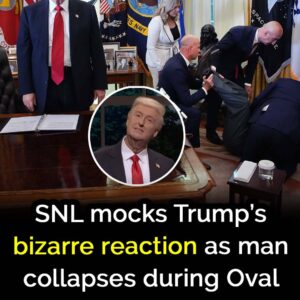Melania Trump’s newly released official White House portrait, unveiled on January 28, 2025, has quickly become a focal point of public discussion and media analysis. Captured in striking black and white by Belgian photographer Régine Mahaux, the image portrays the former First Lady in a sharply tailored black suit with high-waisted trousers. Her direct gaze and poised posture evoke strength and composure, signaling a deliberate departure from the softer, glamorous tone of her 2017 portrait. This visual transformation appears to communicate a redefined sense of identity—one that prioritizes authority, restraint, and self-possession over ornamental elegance.
The choice of black-and-white photography adds a layer of timelessness and gravity to the composition, emphasizing contrast and texture rather than color. The absence of vibrant hues directs the viewer’s attention to form, light, and expression, enhancing the portrait’s air of discipline and sophistication. Behind Melania, the Washington Monument rises in clear focus, serving as a subtle yet potent symbol of national pride and endurance. Its presence grounds the image in American political tradition while reinforcing her enduring connection to public life. Even after her tenure as First Lady, the portrait situates her firmly within the continuum of national symbolism, suggesting that her influence—visual, cultural, and personal—extends beyond her years in the White House.
Public reaction to the portrait has been notably divided. Admirers have praised the image for its timeless elegance and for presenting Melania as a figure of composure and authority. To them, the monochrome aesthetic elevates her style into the realm of classic portraiture, echoing photographic traditions of political icons and fashion legends alike. Critics, however, interpret her expression as distant or severe, arguing that the formal tone reinforces her reputation for aloofness. This split reception reflects the broader public fascination with Melania’s carefully maintained image—a blend of glamour, mystery, and quiet defiance that has long shaped her role in American culture.
The portrait’s release also follows Melania’s headline-making appearance at the recent presidential inauguration, where she wore a dramatic wide-brimmed black hat that quickly became a talking point across media platforms. The hat, like the new portrait, sparked debate: to some observers, it appeared somber and funereal, while others viewed it as an unapologetically powerful fashion statement. Together, these appearances suggest a deliberate recalibration of Melania’s public persona. Through meticulously styled visual cues, she continues to navigate the tension between political distance and cultural visibility, using fashion and imagery as tools to define her narrative on her own terms.
Throughout her public life, Melania Trump has balanced discretion with control, often choosing silence where others might choose speech. Fashion has remained her most consistent language of influence—an avenue through which she communicates poise, independence, and a controlled sense of authority. This portrait extends that strategy: it is not merely a picture but a statement of identity and intent. Every element—the monochrome palette, the precise tailoring, the monument in the distance—works in concert to project a message of power and permanence. It invites interpretation without demanding approval, ensuring that Melania retains authorship over how she is seen and remembered.
Beyond its aesthetic impact, the portrait carries a broader reflection on image, legacy, and the enduring interplay between appearance and meaning. As the Sufi poet Rumi once wrote, “The soul has been given its own ears to hear what the mind does not understand.” The debates surrounding Melania’s portrait underscore how visual representation can both reveal and conceal, inviting audiences to project their own beliefs and biases onto a single frame. In time, the photograph may be remembered less for its immediate controversy and more for what it symbolizes: a woman who continues to define herself through discipline, mystery, and the silent power of style. While the image captures a moment, her legacy—as both public figure and private individual—will depend on the deeper character that endures beyond the lens.





